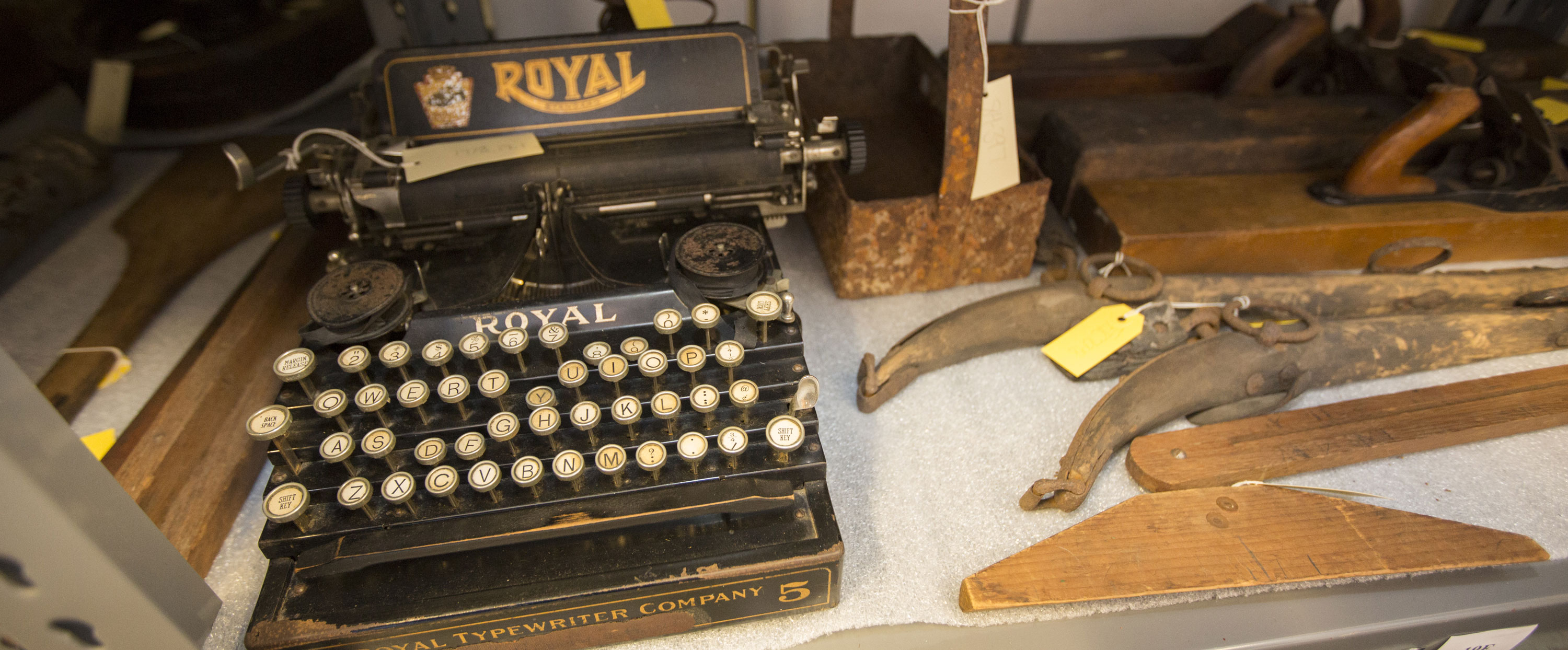One of the best parts about working with historic collections is working with cool artifacts. We currently have 22,700 artifacts in our collection and a regular part of our job as a collections technicians is taking a closer look at them. Sometimes the most interesting finds are what’s underneath the artifact we were originally looking for. For example, this 19-foot leather snakeskin quickly caught our attention while looking at a nearby flag. Our museum is very familiar with snakes and other animals, but they are usually alive, making this an especially surprising find. According to our records, this skin was given by a Father Friedrick, a missionary in Brazil, to local Boy Scout Troop 16 at Holy Trinity. It’s likely Father Friedrick picked up the snakeskin as a souvenir while working in South America in the early- mid 20th century. It came to the museum in 1972.
Many species of boas call South America home and can range in length from 16 inches to 30 feet. This snakeskin measures over 19 feet in length and its largest width is 19 inches. Although they’re often villainized in media, large snakes typically avoid people and are often killed by them out of fear, to protect livestock, or for their skin. A better use for a snakeskin like ours is as an educational tool to discuss their use throughout history and to learn more about snakes.
Like all of our artifacts, we want to preserve this snakeskin for many years. This is especially important for leather and fur since they originally came from animals and are more vulnerable to mold or pests. Therefore, objects like this are stored in temperature and humidity-controlled rooms to protect them from dirt, light, mold, and pests. Similar artifacts like large fur coats and blankets and other leather objects are stored flat in archival quality boxes or rolled on a tube and covered to minimize creases that cause breaks and tears over time. These archival quality materials are sturdier than regular containers and acid free, which extends the life of artifacts as they slowly break down over time. Unfortunately, we do not have 19-foot-long tubes or shelves, so we folded the snakeskin into a box with layers of archival tissue paper to prevent the scales from catching and prevent creasing. For now, this object, the largest and oldest snake at the museum, is tucked away in the historic collection. You can still check out the many interesting live ones on display at the museum today.

